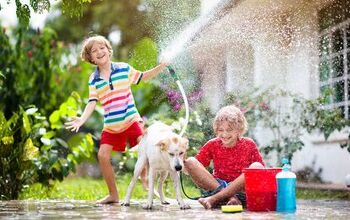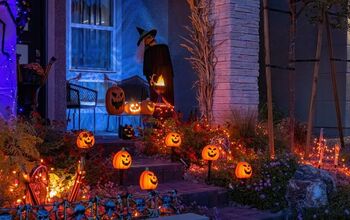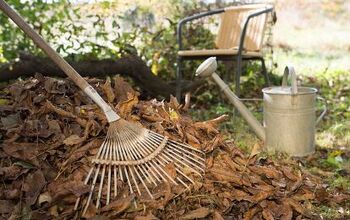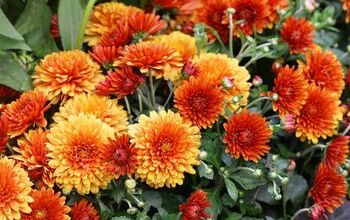Fall Yard Cleanup Checklist

Fall is an exciting time of change, and many homeowners look forward to this time of year. However, it can also be a nuisance for your yard between the grass dying and the leaves falling. Every homeowner should start the season on the right foot with a fall yard cleanup checklist.
The most important tasks for your fall yard cleanup checklist are raking leaves, aerating your lawn, and adding fertilizer. Trim dead branches so that they don’t hinder your trees’ growth or drop into your yard during the fall. Mulch your lawn to prevent soil erosion so that your yard bounces back after the fall and winter.
Make sure to disconnect your hoses during the fall to protect your pipes. All of these tasks will ensure that your yard is ready for spring in a few months. Follow along as we explore the most important things to include on your fall yard cleanup checklist.
Fall Yard Cleanup
A fall yard cleanup is the only way to ensure that your lawn will survive the fall and winter. It can be a hassle, but it’s worth the time and effort to protect your yard. Let’s take a look at the essential tasks for your fall yard cleanup checklist.
1. Rake Leaves
You will need to rake leaves several times throughout the fall to protect your yard. This is especially true if you live in an area with cold falls and winters, such as the east coast or Midwest. Fallen leaves may look colorful and fun, but they can also prevent your lawn from getting the sun and water.
This can make it harder for your yard to bounce back once spring rolls around. Consider shredding the fallen leaves and scattering them across your lawn. This can help provide beneficial nutrients for your yard. You can also rake your leaves into a pile and burn them if you have nowhere to dump them.
2. Remove Gumballs
Gumball trees are beautiful, but it can be difficult to keep up with the prickly balls that they drop onto your lawn. It can be hard to keep up with, especially if your gumball tree is fruitful. It’s best to get on top of things and remove as many gumballs from your yard as possible at the start of autumn.
Lay a tarp down in your yard and rake the gumballs directly onto it. This will make it easier to take the gumballs out of your yard without spilling any on your lawn. You can either dump them into nearby woods or put them in your yard waste bin if you have one.
3. Trim Dead Branches
The last thing that you want is for dead branches to fall into your yard unexpectedly. Fallen branches can also damage wires and structures such as your shed and home. Dead and dying branches are more likely to drop during the fall when the air is cool and dry in many climates.
You can get ahead of the curve if you trim these dad branches before they fall on their own. Use a masonry saw, hacksaw, or chainsaw to remove dead branches. Hire professional help if the branches are up high to reduce the risk of injury.
4. Mow Your Lawn
Ideally, you should mow your lawn one more time right at the beginning of fall. This will keep your grass at the perfect length for when good weather returns in the spring. Tall grass can make your lawn retain too much moisture which will make it harder for it to grow when the weather warms up.
5. Aerate Your Lawn
One of the best things that you include on your fall yard cleanup checklist is lawn aeration. The process involves creating small holes in your lawn to help reduce lawn thatch. Lawn thatch can prevent your grass from growing to its fullest potential. It only costs $130 to aerate the average lawn, and it’s worth the cost.
6. Disconnect Your Hoses
Disconnect your hoses in the fall so that you won’t have to worry about cold temperatures. It’s best to do this in the fall before it’s too late in the winter. Otherwise, your hose can freeze if there is still water inside of it.
This can cause serious pipe damage which can cost thousands of dollars to repair. You don’t have to disconnect them right away, but you should disconnect your hoses when the temperatures get close to freezing.
7. Mulch Your Lawn
Adding mulch to your lawn at the start of fall can protect your yard. Soil erosion is the greatest risk to your yard, and mulch can prevent this. Mulch costs between $2 and $5 per bag if you want to do it yourself. Paying a professional will cost you roughly between $40 and $94 per hour which is worth it if you are inexperienced.
8. Spread Your Perennials
Fall is the best time to spread your perennials throughout your yard. Trim the perennials throughout your soil beds and plant some of the trimmings in the mulch elsewhere. This will get the ball rolling so that your lawn is lush and lavish later on.
Only do this if it won’t harm your existing perennials. The last thing that you want to do is trim too much off of a thriving plant to where it may not be able to sustain itself.
9. Fertilize Your Yard
Fertilizing your lawn in the fall can give it the nutrients it needs to survive the winter and be ready in the spring. As long as you fertilize your yard before October, you can strengthen your grass and soil. It costs roughly $350 to fertilize your lawn professionally, but it can cost much more if you have a large yard.
When Should You Start Fall Cleaning?
Start your fall cleaning at the beginning of September so that you be prepared in case it gets cold faster than expected. Wait until mid to late September to mow your lawn for the last time of the year. This should be your final step besides disconnecting your hoses.
September is also specifically the best time to fertilize your lawn. You will need to continue cleaning your yard throughout the fall to keep up with the leaves. October is when the leaves fall the most, and you’ll need to rake it several times throughout the month.
Related Guides

Nick Durante is a professional writer with a primary focus on home improvement. When he is not writing about home improvement or taking on projects around the house, he likes to read and create art. He is always looking towards the newest trends in home improvement.
More by Nick Durante



























